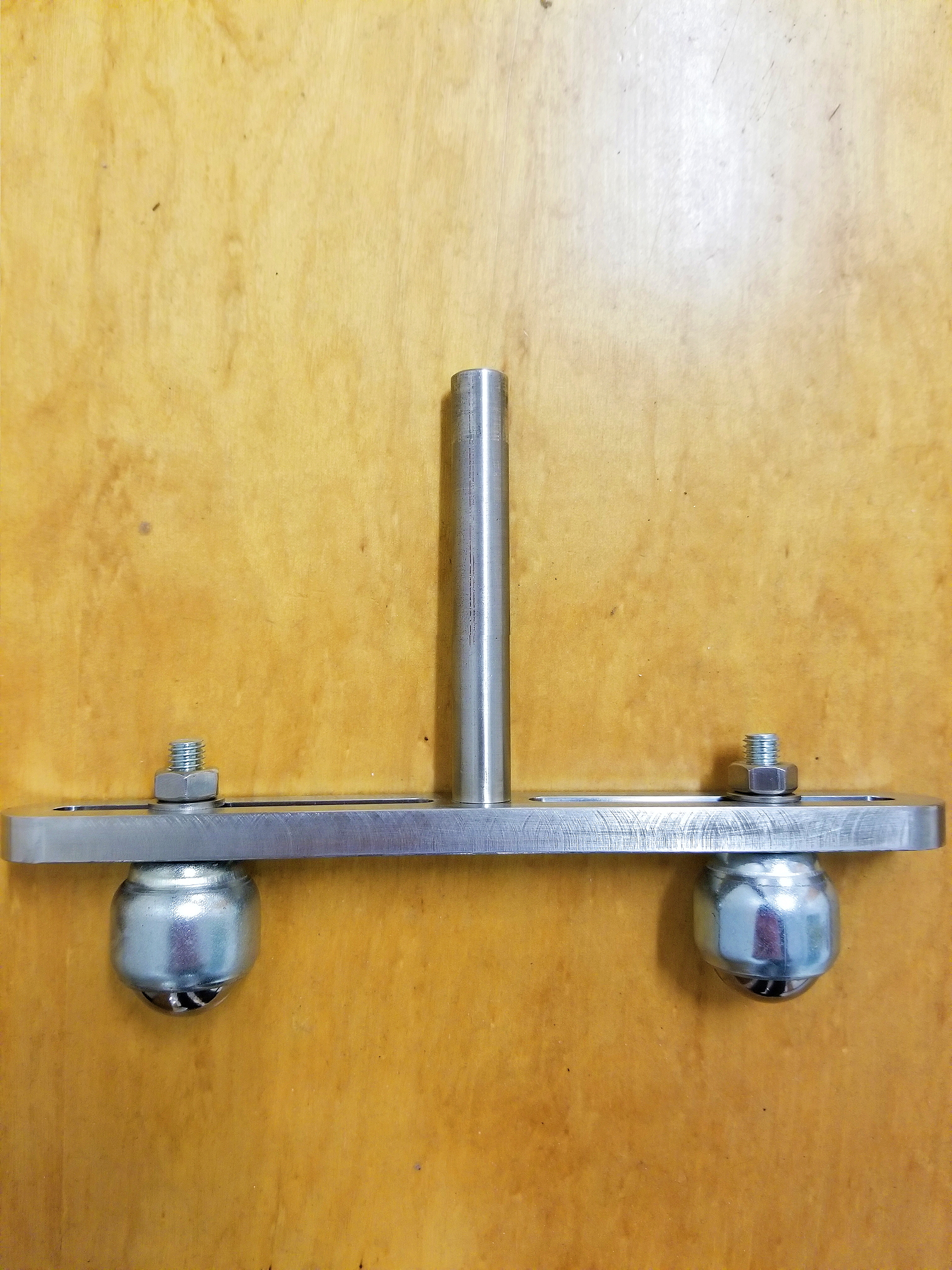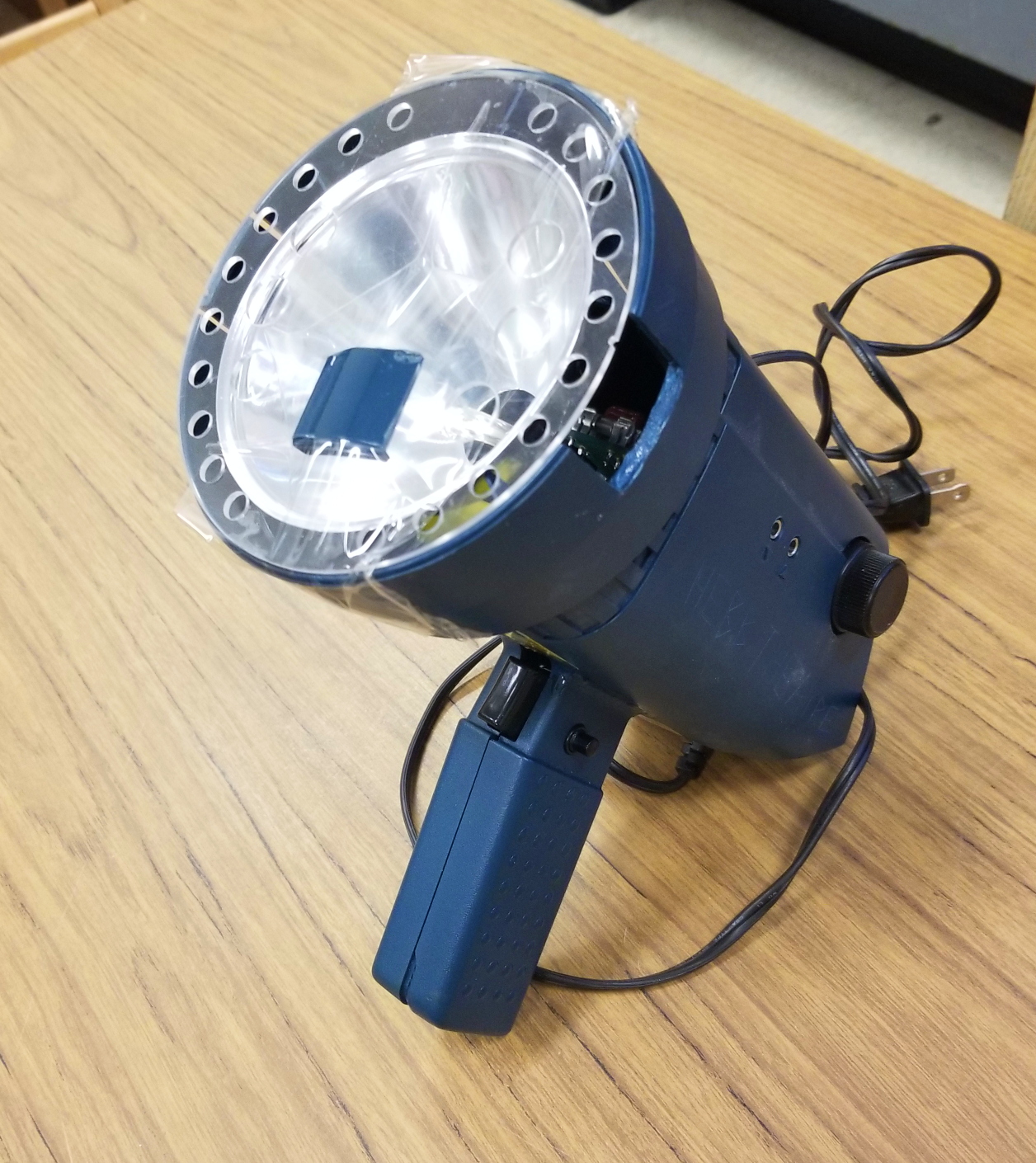Materials Needed
- High speed cordless drill
- Machined piece with two ball casters
- Lycra style fabric
Circular wooden ring to attach fabric onto
- Clamps to secure fabric
- PVC pipe for leg attachment onto ring
- Marbles of various sizes
The first step to designing this project is designing the piece that will attach to the drill. For the purposes of my project, this was custom built in the UBC Physics Machine Shop. However, a similar design could be built for presentation purposes. The two ball casters were used to represent the two colliding black holes in the gravitational wave detection. An important part of this design is having these pieces - which serve as contact points with the fabric - able to move freely so that they will safely move when the drill is operating at the high speeds required in the demonstration.
The ball casters are held in place with a locking washer and nut, which also allows them to have adjustable distances.

A stroboscope can be used to further assist with displaying the waves generated by the drill and machined piece. By matching the drill speed with the strobe speed, the waves will appear to move in slow motion as a result of the stroboscopic effect.

As can be seen in the video above, the constructed universe for the demonstration is comprised of a piece of Lycra-style fabric that is clamped onto a large wooden ring. This wooden ring has attachments that allow for legs made out of PVC pipe to support the structure. This apparatus was built before the development of this demonstration, but could be recreated. The wooden ring used was 68" in diameter and had 6 attachment points for legs.
Another way to help the visualization of the waves is to have the room as dark as possible, with lights off and any window blinds closed.